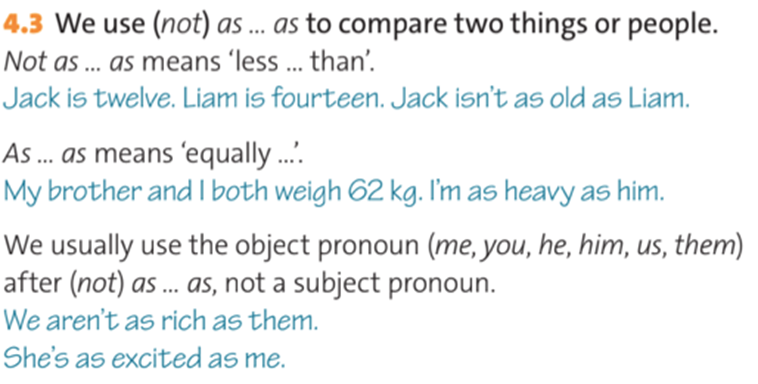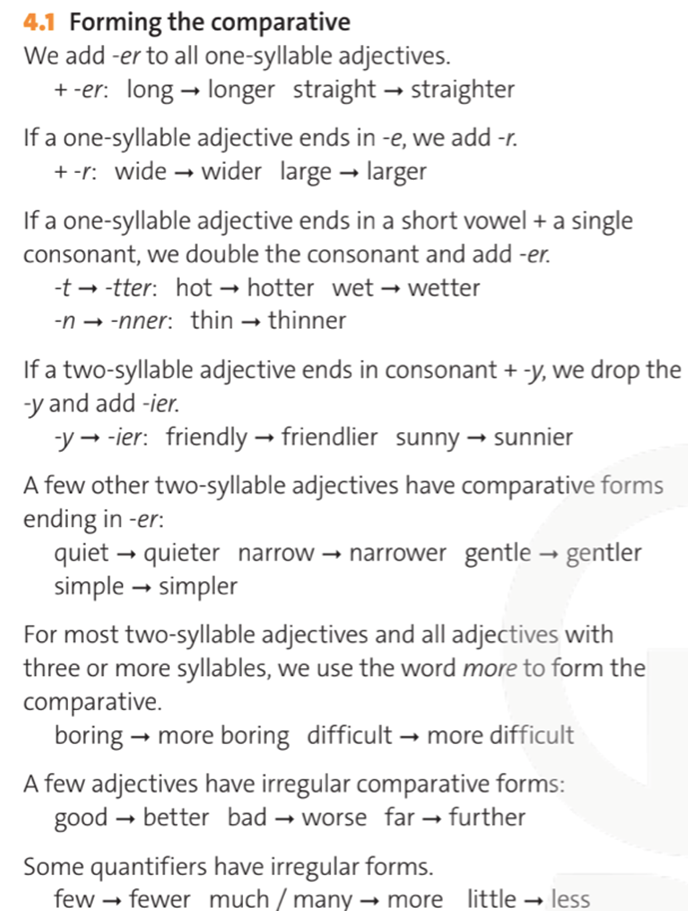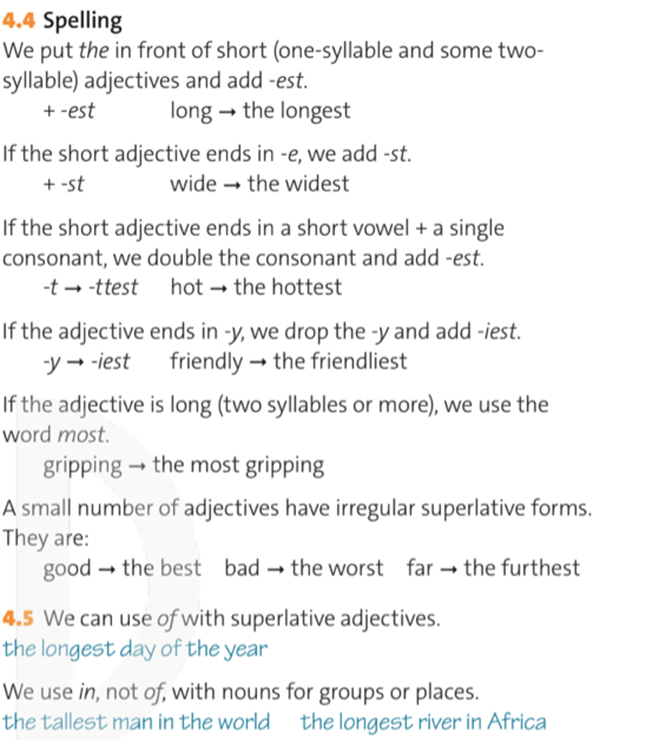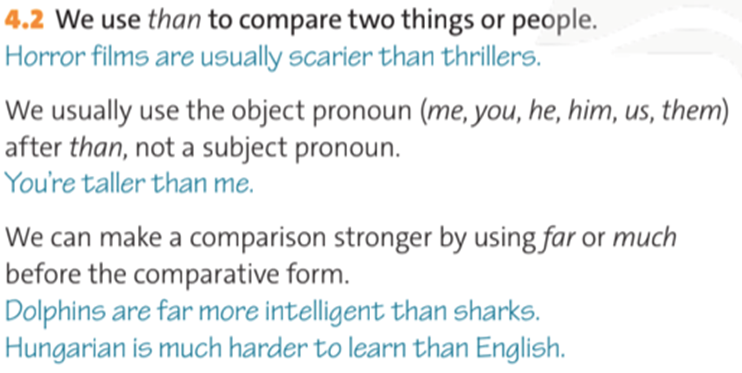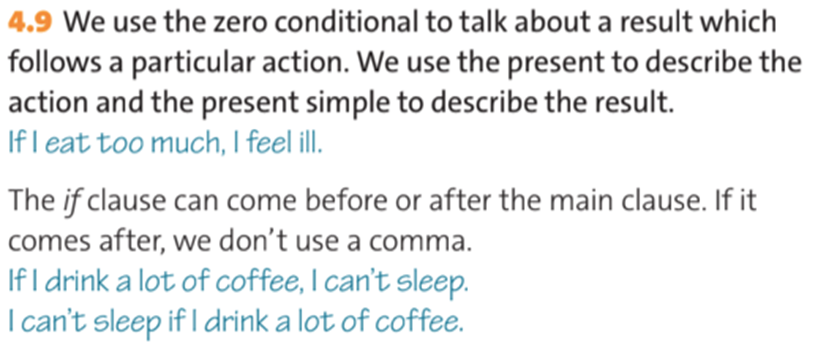Trả lời:
 Giải bởi Vietjack
Giải bởi Vietjack
Hướng dẫn dịch:
- Ta dùng (not) as ... để so sánh hai sự vật hoặc con người.
Not as … as có nghĩa là 'ít hơn ... hơn'.
Jack mười hai tuổi. Liam mười bốn tuổi. Jack không lớn bằng Liam.
- As … as có nghĩa là 'như nhau’.
Tôi và anh trai tôi đều nặng 62 kg. Tôi cũng nặng như anh ấy.
- Ta thường sử dụng đại từ tân ngữ (tôi, bạn, anh ấy, anh ấy, chúng tôi, họ) sau (not) as ... as, không phải là một đại từ chủ ngữ.
Chúng tôi không giàu bằng họ.
Cô ấy cũng hào hứng như tôi.
Hướng dẫn dịch:
- Ta dùng (not) as ... để so sánh hai sự vật hoặc con người.
Not as … as có nghĩa là 'ít hơn ... hơn'.
Jack mười hai tuổi. Liam mười bốn tuổi. Jack không lớn bằng Liam.
- As … as có nghĩa là 'như nhau’.
Tôi và anh trai tôi đều nặng 62 kg. Tôi cũng nặng như anh ấy.
- Ta thường sử dụng đại từ tân ngữ (tôi, bạn, anh ấy, anh ấy, chúng tôi, họ) sau (not) as ... as, không phải là một đại từ chủ ngữ.
Chúng tôi không giàu bằng họ.
Cô ấy cũng hào hứng như tôi.

